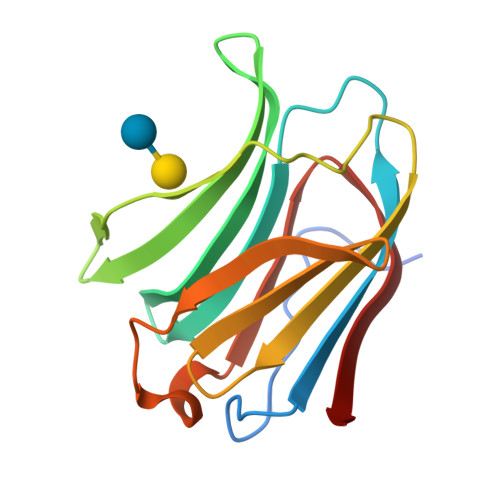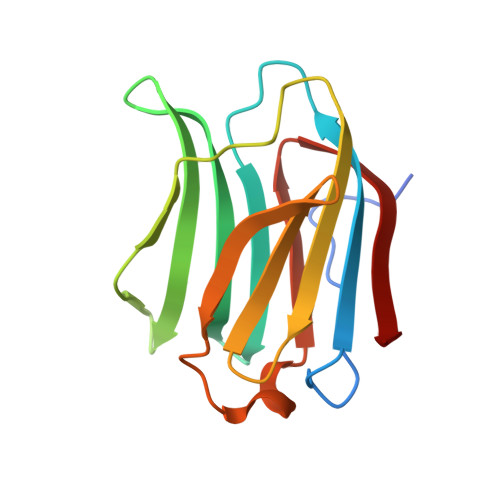The water network in galectin-3 ligand binding site guides inhibitor design.
Su, J., Zhang, T., Wang, P., Liu, F., Tai, G., Zhou, Y.(2015) Acta Biochim Biophys Sin (Shanghai) 47: 192-198
- PubMed: 25662390
- DOI: https://doi.org/10.1093/abbs/gmu132
- Primary Citation of Related Structures:
4R9A, 4R9B, 4R9C, 4R9D, 4RL7 - PubMed Abstract:
Galectin-3 (Gal-3) which shows affinity of β-galactosides is a cancer-related protein. Thus, it is important to understand its ligand binding mechanism and then design its specific inhibitor. It was suggested that the positions of water molecules in Gal-3 ligand-binding site could be replaced by appropriate chemical groups of ideal inhibitors. However, the reported structures of Gal-3 carbohydrate recognition domain (CRD) complexed with lactose showed that the number of water molecules are different and the water positions are inconsistent in the ligand-binding site. This study reported four high-resolution (1.24-1.19 Å) structures of Gal-3 CRD complexed with lactose, and accurately located 12 conserved water molecules in the water network of Gal-3 CRD ligand-binding site by merging these structures. These water molecules either directly stabilize the binding of Gal-3 CRD and lactose, or hold the former water molecules at the right place. In particular, water molecule 4 (W4) which only coordinates with water molecule 5 (W5) and water molecule 6 (W6) plays a key role in stabilizing galactose residue. In addition, by three-dimensional alignment of the positions of all residues, 14 flexible parts of Gal-3 CRD were found to dynamically fluctuate in the crystalline environment.
Organizational Affiliation:
School of Life Sciences, Northeast Normal University, Changchun 130024, China.




















